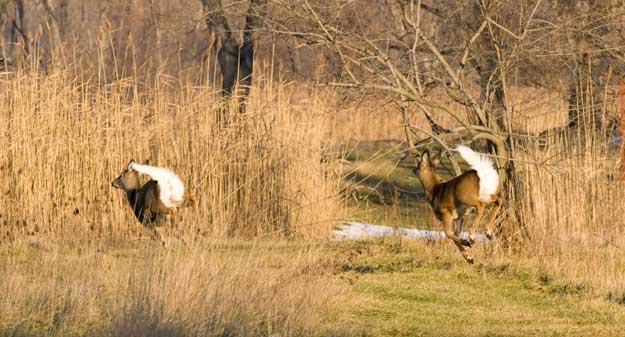
Even if you have the best spot in the world, if you alert whitetails to your presence before you get there, it really doesn’t matter. Stand approach is an often overlooked aspect of the hunt. You must get to your ambush site without alerting any animals. Obviously wind direction and thermal current have to be considered, but masking your sounds and making sure you’re not seen are equally important. There are many strategies that can be implemented, but getting to your stand undetected is paramount to your success.
Thinking ahead, a manager may plant hedgerows to prevent view into exposed areas of their trail. Tall grasses (both annuals and perennials), shrubs and trees (both deciduous and conifers) can all be used to create a screen so a hunter can slip into their ambush site undetected. BioLogic’s Blind Spot is ideal for this purpose. You can plant it and have a visual screen in about two months.
Clear your approach trails of sticks and also branches alongside the trail that can slap back against your leg to create unnatural sounds. Some choose to use a rake to clear leaves and debris off of their trail for an absolutely noiseless advance. Some have actually taken a leaf vacuum to their trail to remove anything that might crunch on their approach.
Through thick brush or tall grass a pruner, hedge clipper or weed whacker may also be of service. You should be able to slip into your stand site unnoticed even with whitetails bedded within 50 to 100 yards.
Pressure is one of the most ignored facets of the hunt. People go hunting just because they have the day off of work and head to a stand site even when the conditions aren’t in their favor – most of the time doing much more harm than good. You should only attempt to hunt when the odds are in your favor. Keeping pressure low is a key to hunting undisturbed whitetails that will move freely throughout your property during legal hunting hours, and stand approach is the “front line” of the battle to keep pressure low.
This tip is courtesy of the GameKeepers Field Notes, a weekly wildlife and land management email newsletter produced by the Mossy Oak GameKeepers.
A GameKeeper by definition is someone who truly loves AND lives the land, the critters and nature…not just during hunting season but all the time. A GameKeeper wants to be outdoors every day and work the dirt while living their personal “obsession”.
Find out more about what makes a GameKeeper by visiting our website.































